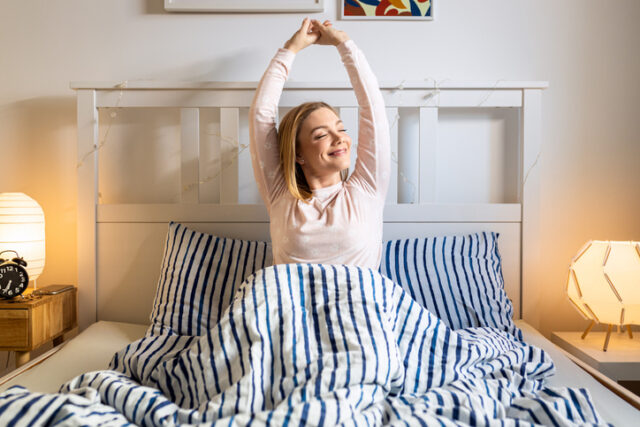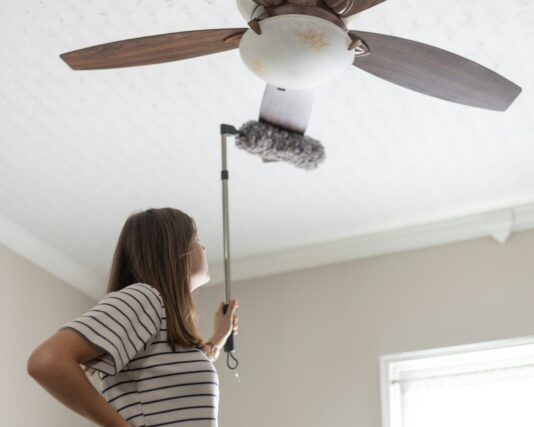Living with ADHD as a woman can be tough sometimes, especially when it comes to managing daily life.

Structure helps, of course, but rigid systems often feel overwhelming or impossible to stick to. The key is creating routines that actually work with an ADHD brain — simple, flexible, and designed to reduce stress instead of adding to it. These are just a few practices that every neurodiverse woman needs to make life easier, more organised, and less chaotic.
1. A morning routine that removes decision fatigue

Starting the day with too many choices can be exhausting, making it harder to get going. A simple morning routine that’s the same every day reduces decision fatigue and makes mornings feel smoother. Things like laying out clothes the night before, eating the same breakfast most days, or following a set order for getting ready help take the guesswork out of mornings. For ADHD brains, predictability reduces stress. The less thinking involved in getting out the door, the easier it is to start the day feeling calm instead of frazzled.
2. A brain dump routine to offload mental clutter

ADHD minds are constantly running with ideas, reminders, and half-finished thoughts, which can feel overwhelming. A daily brain dump — writing everything down in a notebook, app, or voice note — helps clear mental space. It’s not about making an organised to-do list, just getting everything out so it’s not rattling around in your head. Once things are written down, they feel less urgent. A brain dump helps keep you focused on what matters without the stress of trying to remember everything at once.
3. A time-blocking system for tasks

Instead of relying on long to-do lists, time-blocking works better for ADHD brains by setting clear limits on when things get done. Assigning tasks to specific time slots — think answering emails from 10–11am or tidying up before dinner —prevents overwhelm and keeps the day structured. Having a rough plan stops tasks from expanding endlessly. Even if you don’t stick to the schedule exactly, having a framework makes it easier to focus. The structure of time blocks keeps things from feeling chaotic and helps prevent procrastination.
4. A “body-doubling” routine for accountability

Many ADHD women find it easier to stay on task when someone else is around, even if that person isn’t helping. Body doubling — working alongside a friend, partner, or even joining a virtual coworking session — makes focusing easier. It’s a simple way to create external accountability without pressure. Whether it’s cleaning with a friend on the phone or working at a café where others are being productive, body doubling provides that extra push to stay engaged. It’s one of the easiest ways to trick your brain into getting things done.
5. A reset routine for transition times

Switching between tasks can be difficult with ADHD, often leading to distraction or feeling stuck. A short reset routine — stretching, changing locations, or doing a quick breathing exercise — helps signal to your brain that it’s time to switch focus. This makes transitions between work, home, or different activities feel smoother. Without a reset, the brain tends to either hyperfocus or avoid the next task entirely. A simple, intentional break prevents that stuck feeling and helps shift gears more easily.
6. A simplified meal planning routine
 Source: Unsplash
Source: Unsplash Figuring out what to eat every day can be stressful, and ADHD brains often struggle with meal planning. Having a set rotation of easy meals like “pasta on Mondays” or “stir-fry on Thursdays” takes the stress out of deciding what to cook. Prepping a few ingredients in advance or having backup frozen meals also helps avoid last-minute decision paralysis. Overcomplicated meal plans tend to fall apart, so keeping things predictable and easy makes life simpler. The goal is to reduce the mental load of daily food choices, not create extra work.
7. A designated “dumping ground” for essentials

Constantly losing keys, phone, or wallet is common with ADHD, so having a single place to drop them as soon as you get home saves time and stress. A basket, tray, or hook by the door works best — something visible and in the natural path of where you walk in. The key is making it effortless so you don’t forget to use it. Having a set place for essentials eliminates the daily search-and-panic cycle. It’s a tiny habit that makes a huge difference.
8. A bedtime routine that actually works

Many ADHD women struggle with sleep, especially with racing thoughts at night. A bedtime routine that includes winding down with low-stimulation activities like reading, listening to calming music, or doing gentle stretching helps send the message to the brain that it’s time to rest. Keeping screens to a minimum and having a consistent bedtime also improve sleep quality. Sleep struggles are common with ADHD, but having a set nighttime routine makes it easier to actually get the rest you need. The key is consistency, even on weekends.
9. A “closing shift” routine to reset the house
 Source: Unsplash
Source: Unsplash Mess builds up fast, and once things feel out of control, it’s hard to know where to start. A five-minute nightly reset that involves clearing surfaces, putting away stray items, or running the dishwasher prevents chaos from building up. Think of it like closing down a café, prepping the space so it’s ready for the next day. Even doing one or two small tasks makes a difference. Waking up to a tidier space makes mornings feel much less overwhelming.
10. A scheduled “life admin” time slot

Piles of unopened mail, overdue appointments, and forgotten forms can add up quickly with ADHD. Setting aside a specific time each week like Sunday afternoons to handle admin tasks helps stop them from becoming overwhelming. It’s easier to tackle things in a planned session rather than avoiding them until they become urgent. Putting life admin on a schedule means it actually gets done. It’s a simple way to stay on top of boring but necessary tasks without feeling constantly behind.
11. A movement routine that feels fun

Exercise is great for focus, but traditional workouts can feel boring or hard to stick to. The best routine is one that doesn’t feel like a chore, whether it’s dancing, hiking, swimming, or even walking while listening to a podcast. ADHD brains thrive on variety, so switching up activities helps keep things interesting. Movement isn’t just for fitness — it boosts dopamine levels and improves focus. Finding something enjoyable makes it easier to stick with long-term.
12. A “brain buffer” before important tasks

Jumping straight into something mentally demanding can feel impossible with ADHD. Taking a few minutes beforehand to ease into focus by doodling, listening to music, or doing a quick puzzle helps engage the brain. It’s like warming up before exercise but for your mind. This small step reduces procrastination and makes starting tasks less intimidating. A short brain buffer can be the difference between getting things done or avoiding them entirely.
13. A flexible weekly planning routine

Rigid planning often backfires with ADHD, but having a loose weekly overview helps keep things on track. A Sunday check-in to glance at appointments, deadlines, or key tasks makes the week feel more manageable. The goal isn’t to plan every detail, just to have a general roadmap. Keeping it flexible stops it from feeling restrictive. Having a basic plan helps prevent last-minute chaos while still allowing for spontaneity.
14. A routine for self-compassion

ADHD can come with a lot of frustration, but learning to be kind to yourself is crucial. Having a simple habit — repeating affirmations, writing down small wins, or just taking deep breaths when overwhelmed, for instance — helps break the cycle of self-criticism. Progress isn’t about perfection—it’s about finding what works for you. Being your own biggest critic won’t help you stay organised, but self-compassion will. Small reminders to be patient with yourself make a huge difference in managing ADHD successfully.




